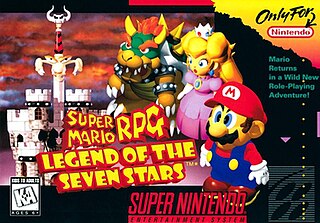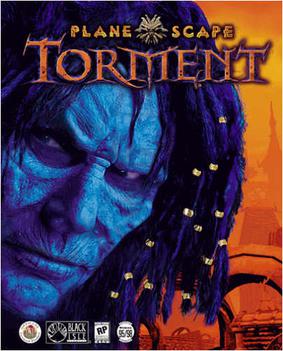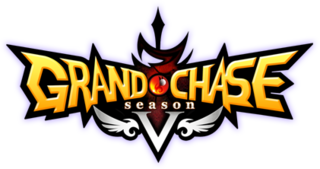Setting
The First
The First is the only game in the series in which the titular Lisa is directly seen by the player (although characters will often allude to her and she appears in both visions and flashback sequences experienced by other characters). Although largely unimportant to subsequent entries, it provides backstory on the series antagonist, Marty, and the motivation for the protagonist of The Painful, Brad Armstrong.
One night, Lisa escapes from a decrepit house whilst her abusive father Martin Armstrong watches television on the couch. Despite physically escaping the location, Lisa is unable to move past the abuse inflicted upon her.
The game is unique in that its cast is composed solely of two characters: Lisa herself and various deformed and grotesque manifestations of Marty. Players navigate many environments which shed light upon the relationship between Lisa and Marty: showcasing that, while Marty was once a caring and kindhearted man, an unknown incident (implied to be the departure of Lisa's mother) has left him dejected and sent him into cycle of alcohol dependency. It is frequently implied that Marty both physically and sexually abused Lisa. A third character, Tricky Rick, is also present though is commonly believed to symbolize Lisa being raped by Marty, as the character makes several allusions to this.
The game concludes with Lisa spiraling into madness, and it is revealed in subsequent entries in the series that she committed suicide by hanging herself.
World
Both The Painful and The Joyful take place in a post-apocalyptic wasteland called Olathe. Once a normal town, following an unseen cataclysm known as "The Flash", all women have perished, and humanity was left with no way to reproduce. Many have resorted to Joy, a highly addictive drug spread by a gang leader named Buzzo, that makes people "feel nothing", in order to numb the pain. However, unbeknownst to its users, it eventually causes them to become deformed, mindless creatures known as Joy Mutants. The strongest group in the wasteland is the army of Rando, a powerful martial artist and warlord who always wears a skull-shaped mask.
Story
The game starts during a flashback, in which the player controls a child named Bradley Armstrong. The departure of his mother leads to Bradley and his younger sister, Lisa, to be abused and neglected by their father, Marty Armstrong. The game then skips forward to the post-apocalyptic future, where Brad, now a middle-aged ex-martial arts instructor, lives with his friends. One day, he discovers a baby girl laying in the wasteland. While his friends plead for him to give the child to Rando, Brad refuses, instead raising the young girl he christens "Buddy" in secret. She is eventually found and seemingly kidnapped, leading Brad to embark on a journey across Olathe to rescue her.
During his quest, Brad meets many different characters, some of whom may be recruited as party members by the player to be used in combat. Throughout the game, flashback scenes depict a pre-apocalyptic Olathe, shedding light on Brad's early life, including his upbringing alongside his younger sister Lisa and their relationship with Marty. Brad also repeatedly encounters Buzzo, who forces him to make serious choices with permanent gameplay consequences.
Brad and Buddy are later reunited, and Brad realizes that Buddy left on her own due to Brad's controlling nature. Brad still decides to take Buddy back to their home, but he is cornered by Buzzo and his gang, who knock him out and force-feed him Joy in front of his daughter. Brad has a Joy-induced blackout, and when he wakes up he finds that Buzzo, his group, and Buddy are gone. Despite realizing Buddy is unwilling to return with him, Brad pushes forwards, his past trauma causing him to desperately fear that harm will befall Buddy. After hearing that Buddy stole a boat and presumably went out to sea, Brad constructs his own in attempts to reach her, abandoning his party members whilst they sleep.
Brad finds Buddy on a desolate island, being cared for by an aged Marty. The player is given the option to spare Marty, though selecting this option will not prevent Brad from attacking him. During the fight, Brad is forced to physically assault Buddy in attempts to kill Marty, and he proceeds to black-out. When Buddy escapes yet again, Brad uses a corpse as a flotation device to pursue his adoptive daughter.
When he reaches land, Brad encounters the father of his childhood friend "Sticky": Mr. Angoneli. Angoneli believes that God has sent Buddy to him, recounting how the apocalypse has allowed him to thrive, explaining that before the flash occurred, he had been an unimportant janitor. Angoneli explains that he must "brand" Buddy's face in order to make his mark on history before raping her. Brad swiftly attacks him, and attempts to console an injured Buddy, who rebuffs him: reiterating that she does not want to be saved before running off, eventually reaching the warlord Rando. Unexpectedly, Brad's party members arrive to confront him (though in the case that the player does not have a complete party, three shadows called "Illusion of Friends" will appear) and reveal their true thoughts about Brad, which ranges wildly between characters: for example the shopping cart racer Frank Minetti reveals he has always hated Brad and intended to backstab him from the beginning, while the professional wrestler Shocklord is reluctant to fight and begs his cohorts not to harm Brad. Brad, obsessed with reuniting with his adoptive daughter slaughters them and proceeds to massacre Rando's forces, and severely cripples Rando. Brad finally reaches Buddy, as she berates him for ruining her chances at freedom.
The player's final decision in the game is whether or not Buddy hugs a dying Brad (though this has no impact on the game's story), who proceeds to ask if he did the right thing. Brad then falls over, apparently dead. The ending the player receives depends on whether they selected to play on Pain Mode or use the drug Joy, though Brad will always transform into a Joy Mutant. Depending on the player's choices, different flashback sequences will play showcasing Brad's life before the Flash: shedding light on the titular Lisa's suicide.
Lisa: The Joyful
The game's DLC chapter takes place immediately after the end of the second game. Rando recovers from the fatal injuries inflicted upon him by Brad, and accompanies Buddy as she tries to become the most powerful person in Olathe: by killing the warlords ruling it, despite Rando's disapproval.
Following Buddy's slaughter of a village inhabited by pacifists, Rando leaves Buddy presumably due to his horror at the senselessness of the violence Buddy has unleashed upon Olathe.
Rando is subsequently captured by a man by the name of Bolo Bugaughtiichi, who utilizes him as bait in an ultimately unsuccessful effort to capture and rape Buddy. Regardless of player choice, Bolo is unsuccessful, and is killed: either by Buddy or by a mutated creature nicknamed "Sweetheart". If Sweetheart kills Bolo, a horribly injured Rando reveals that he was behind the kidnapping, in an attempt to keep Buddy safe and protected. Buddy, in a violent rage, kills Rando. Afterwards, Buddy suffers from various hallucinations, implied to be the byproduct of taking Joy, such as seeing Brad and Rando watching her from various cliffs and overhangs.
After defeating all of the game's warlords, Buddy confronts Dr. Yado, a trumpet-playing professor who appears in secret locations in The Painful, but cannot be interacted with. Yado, a mad scientist who created Joy, and likely caused the Flash, used Buzzo to spread Joy throughout Olathe in an attempt to destroy civilization and rule the world. The last part of his plan is to murder Buddy, the one force strong enough to bring him down. Buddy is suddenly ambushed by Sweetheart, but is saved by Buzzo, who informs her that Yado has a vaccine that can prevent her from becoming a Joy Mutant. After Yado's defeat, he begins to verbally confront Buddy, revealing himself to be her biological father, and asserts that he has control over her. He is suddenly killed by a horribly injured Buzzo, who renounced both of their evil actions.
Buzzo explains that he was formerly Lisa's lover, and blamed Brad for failing to prevent his father's abuse, which eventually led to Lisa's suicide. This is what made him torment Brad throughout The Painful. After insisting that Brad was Buddy's true father and a good man, he mutates due to his own secret Joy use, and commits suicide via biting off his own neck. The player then has to make a final choice. Buddy is due to mutate regardless of the player's Joy use. Buddy can choose to take or refuse the vaccine, which stops Joy's mutagenic effects. Either choice ends the game with a cutscene that changes depending on what was selected.


















